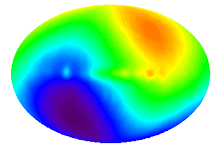Gut microbiota in
health and disease
The human
gastrointestinal (GI) tract contains complex consortia of trillions of
microorganisms (approximately 1 × 1013 to 1 × 1014,
biomass > 1 kg ),
thousands of bacterial phylotypes, as well as hydrogen-consuming methanogenic
archaea with a collective genome (also termed microbiome), the majority of
which resides in the colon As a whole,
the microbiome represents more than 100 times the human genome. Thus, the human
‘metagenome’ consists of a mixture of genes embedded in the human genome (Homo
sapiens) and in the genomes of our microbial partners. The microbiota and its
microbiome provide us humans with additional gene products, we lack, and these
serve many functions pertinent to the maintenance of our homeostasis. The human
gut microbiota system may be regarded as a ‘microbial organ’ within the gut,
which contributes to multiple host processes including the defense against
pathogens at the gut level, immunity (mediated through a number of signal
molecules and metabolites), the development of the intestinal microvilli, and
the synthesis of several vitamins. Accumulating evidence indicates that the gut
microbiota has a crucial role in conditions including obesity, diabetes,
non-alcoholic fatty liver disease, inflammatory bowel disease (IBD) and even
cancer. Gut microbial composition among healthy humans is influenced by host
genotype, diet, age and sex, and it appears that organic disease and drugs can
modulate microbiome composition and activities. At birth, the gut is sterile
and is colonized immediately, ultimately developing into a stable community,
although there are marked variations in microbial composition between
individuals. Within an individual the composition is remarkably stable at
different anatomical locations along the gut, but absolute number vary greatly,
ranging from 1011 cells g−1 content in the ascending colon to 107–8 in the distal ileum and 10−2–3
in the proximal
ileum and jejunum.

沒有留言:
張貼留言